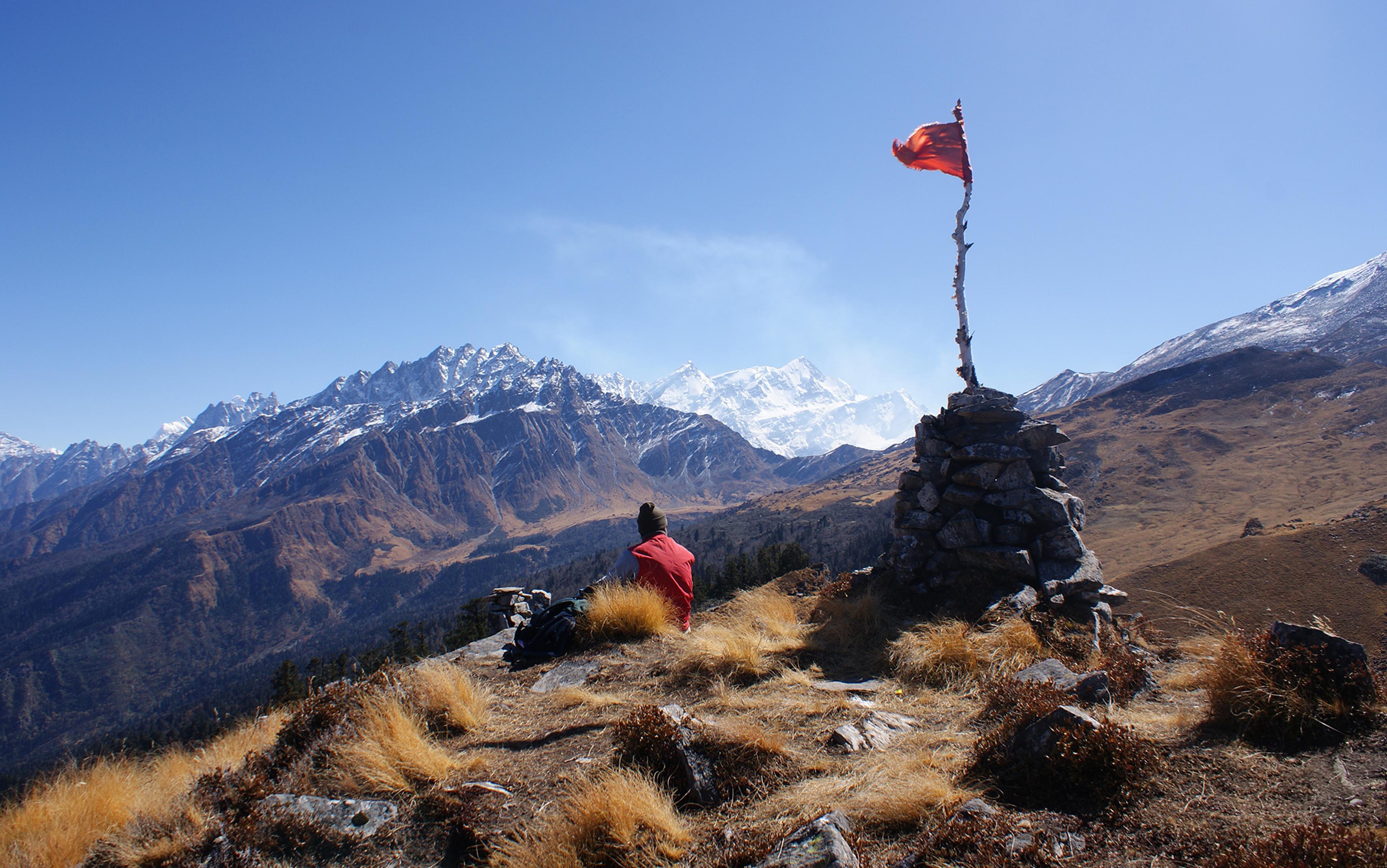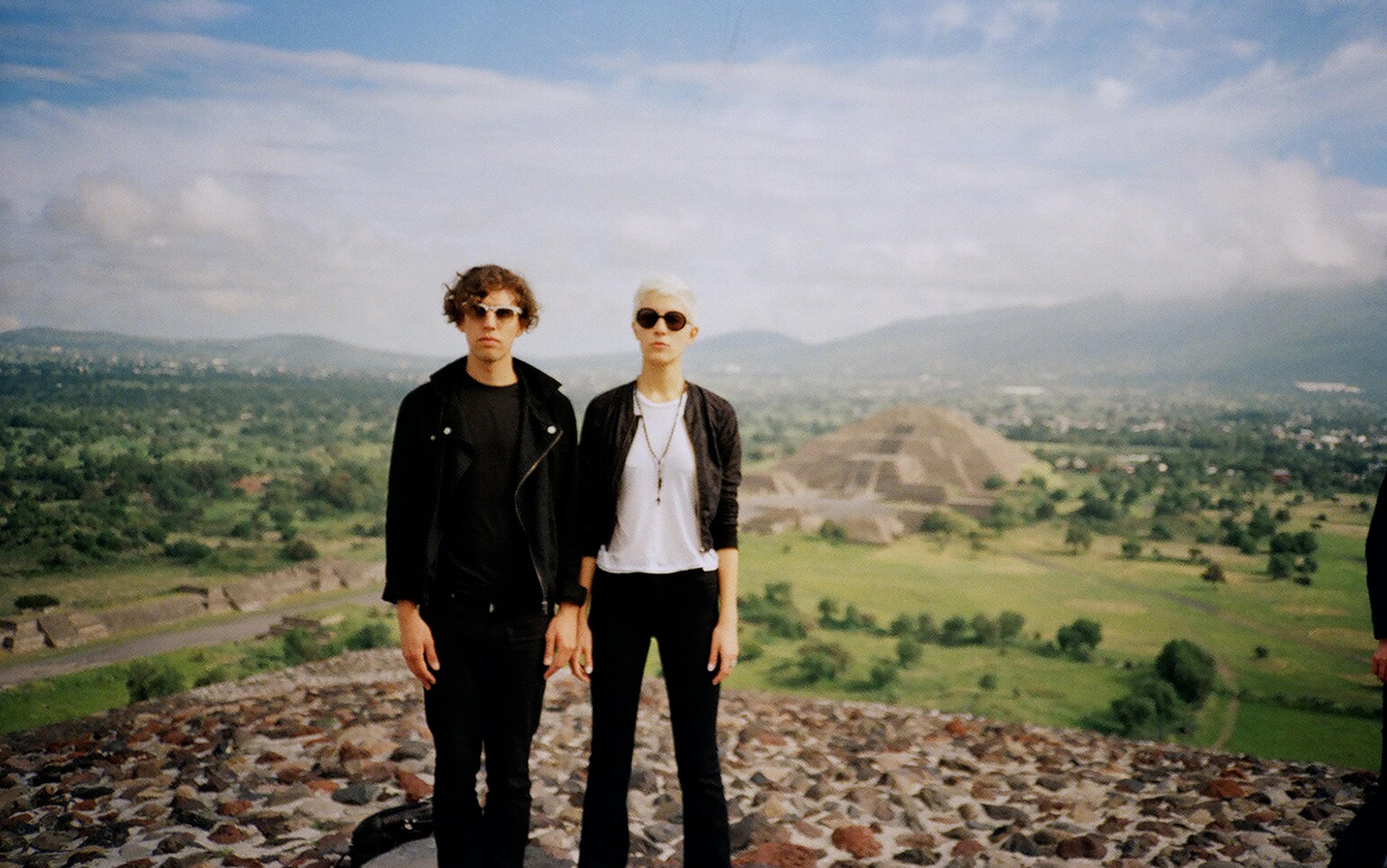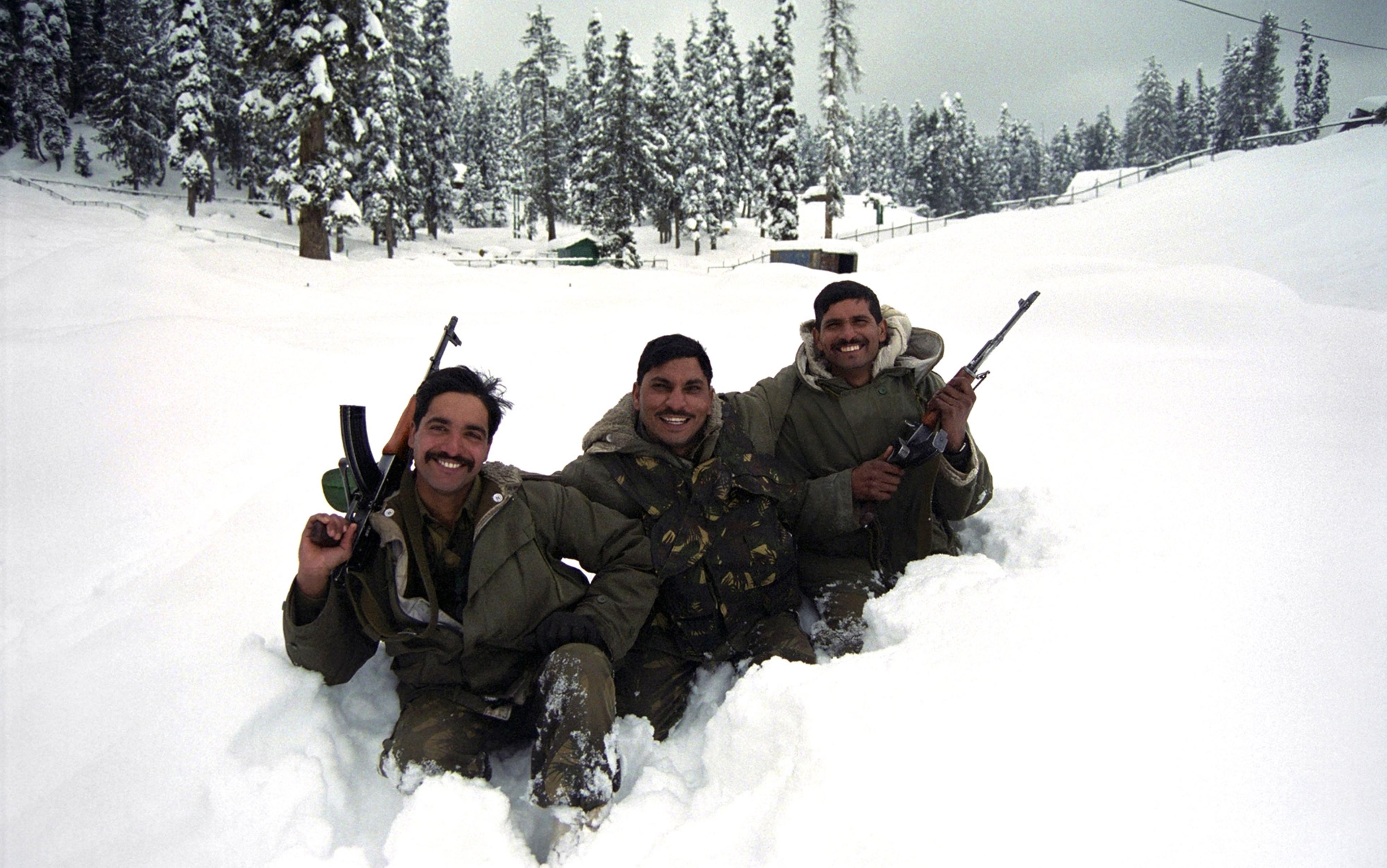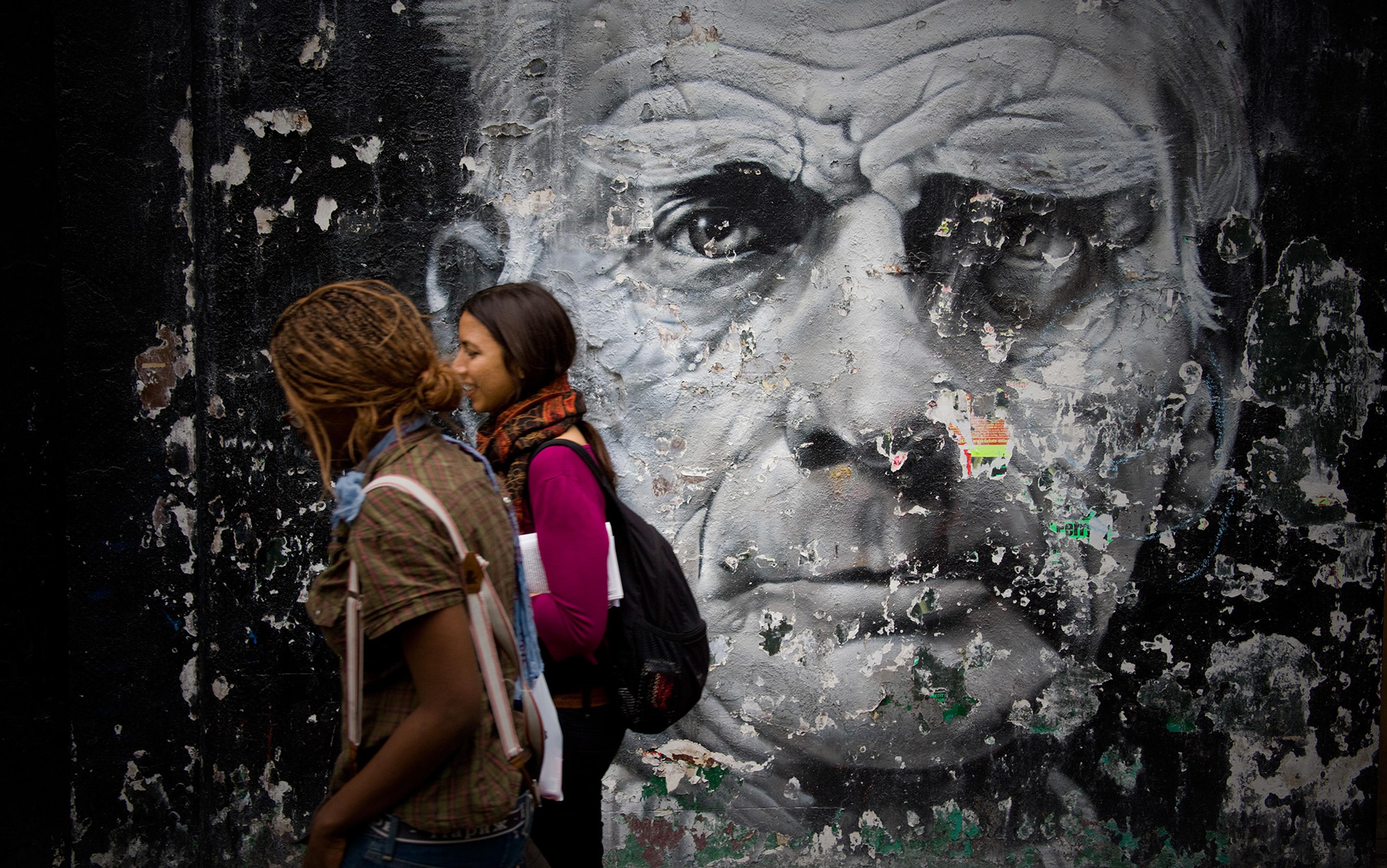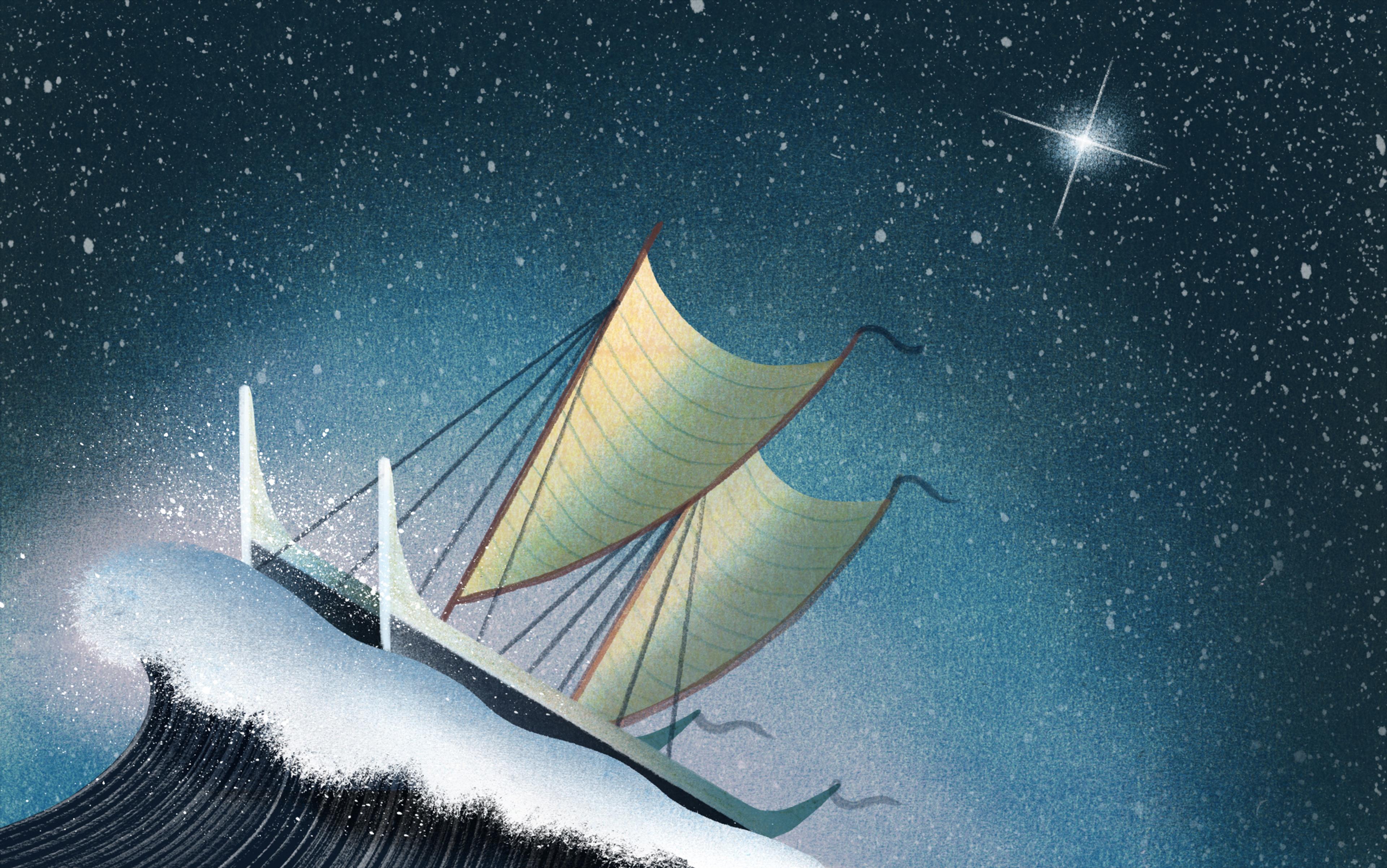I stood atop Mount Vesuvius with a small band of American classicists, reading a letter (it was not addressed to us but then that has never stopped classicists). This particular epistola was from Pliny the Younger to Tacitus and it recounted the great volcanic eruption during the reign of Titus that had incinerated, buried or drowned around 16,000 souls in Pompeii and Herculaneum – including Pliny the Elder. Below us, fumes issued from vents that opened like flues in the mountain, and the smell of sulphur was strong on the nostril. Fogs from the bay had settled on three sides. Some classicists paced. Pliny Jr was describing an attempted evacuation by boat.
A curly-haired Italian teenager approached, his father several steps behind. The youth was unflustered by the strange noises we made as we read aloud. This was not the Italian teenager sweating Carlsberg beer in the Campo de’ Fiori, nor the one who says things about your sister, things you then refuse to translate when she asks. No, this youth, evidently the pride of southern Italy, had read Pliny in Latin courses. Flamboyant in his enthusiasms, the lad fell in with us and offered apt and elegant translations into Italian, at which our magister snapped his fingers approvingly. When you’re speaking a dead language and someone joins you, the impulse is to treat him like a friendly ghost.
I love and will always remember this moment for the strange warmth across languages and generations. You could feel all these cultural strata almost flatten into one another, like successive layers of ash that enfolded and preserved Herculaneum – the Latin, the Italian, the American English, the two generations of Plinys, the two generations of Italians, the goofy Americans on a fellowship learning how to speak Latin as the Romans did, with no one asking why because the answer was self-evident: For moments such as this. Studying abroad, surrendering oneself to a country and a language not your own, is a modern affirmation of much older ideas of cultural exchange. Swap our shorts and sundresses for waistcoats and frocks, and you’d have a scene right out of the early 18th century.
Speaking Latin is an odd exercise in the 21st century, especially in public, and I wouldn’t recommend it to anyone with a highly developed sense of vanity. But for centuries, the notion of historico-literary pilgrimage was central to the Grand Tour, the tradition of temporary migrations among England’s moneyed classes, a voyage into Europe and also into antiquity, which was modish between the 17th and 19th centuries.
Indeed these peregrinations were more than modish. They were an obligatory element of a gentleman’s education, whereby you saw the greatness that was Rome and also got to drink obscenely and mock the Dutch and fondle washerwomen across Europe. The stated goal was to edify England’s future ruling class in aesthetic and political terms, and the results back home comprised a boom in the arts, a whole new idiom of writing, hangovers by the hundreds, and lasting cases of the French pox.
We find the residue of this tradition in study-abroad programmes, semesters at sea, exchange programmes, gap years, and anything done by Australians in their peripatetic period (roughly between the ages of 18 and 28). A common refrain – especially where the Australians are concerned – is why?! What use is all this meandering and backpacking, these soi-disant ‘journeys of self-discovery’, these shufflings through the Louvre, these youthful fumblings with unfamiliar brassieres in hostels that smell of overcooked kidney beans? There is no single answer. Some travel is good and righteous, whereas other travel does ill to the world and little good to the traveller. In this respect, travel is no different from politics or art or sex. Given a larger and more heterogenous species of travellers in the past two centuries, it follows that we must consider a larger and more heterogenous sense of travel options. Such a survey will confirm that a New Grand Tour is possible in the 21st century, even if it suffers from the failures of Grand Tours past.
Travelling is by nature ecstatic. Ecstasy (ἔκστασις in Greek) is a standing outside oneself, a holy sense of alienation from a place of cultural and psychological comfort. This surrender of the self, requisite for real engagement with a foreign culture, found itself at odds with a stylised English provincialism that was the code of the Grand Tour. If you were a good Protestant, your job was to visit France without betraying state secrets or becoming a Catholic; to visit Italy without growing a moustache or becoming a Catholic; to visit Switzerland without being impregnated by Lord Byron; to bathe in Lac Léman with Voltaire and give thanks for Geneva’s paucity of Catholics.
Basically, it was a case of sending England’s future rulers into dens of Catholic culture and telling them not to play with the relics. Bound up in this contradiction, as the reign of Queen Anne gave way to the Georgian age, was the sense that England’s swelling empire had fulfilled the unattained ideals of Rome’s golden age. George Lyttelton, writing from Rome in 1730, exhorted Alexander Pope ‘To sing the land, which yet alone can boast / That liberty corrupted Rome has lost’.
The Oxford English Dictionary credits the Catholic priest and travel writer Richard Lassels with the first published use of the phrase ‘Grand Tour’, which appears in his Voyage of Italy (1670), published two years after the author’s death. In the 1650s, Lassels served as guide to (mostly) Catholic families of nobility who wished to see the glories of Italy, and proved a generous travel-mentor to various English Catholics in exile throughout the Cromwell interregnum. In the Voyage of Italy, which he prepared and revised for nearly two decades, he advises ‘all young Lords’ to become ‘accomplished and consummate Traveller[s]’. In Lassels’s account, travel is central to the four areas of improvement and education: intellectual, social, ethical, and political. After the Restoration, with Charles II wearing a French moustache, and a cultural swing from Puritanism to sybaritism – the return of the theatres, the slackening of sexual inhibitions – Europe was in essence open to English pleasure-seekers, and those who wished for a bit of edification (from the Latin aedificatio – an architectural improvement).
Indeed, it has been suggested that Charles II’s European exile during the interregnum helped to boost England’s ethos of self-discovery on the continent. Italy via France became the standard route, with Switzerland an option for philosophers, and Greece a further, more exotic destination for a minority of especially adventurous noblemen, most famously including Byron. The height of the Grand Tour renewed English painting, spawned new genres of literature, and had no small effect on London’s neoclassical architectural programmes in the mid to late 18th century. Penitus toto divisos orbe Britannos, sings Meliboeus in Vergil’s first eclogue – ‘Those Britons, entirely separated from the world’. For centuries, England had been the provinces of European culture (the Renaissance made landfall there quite late). The Grand Tour was an opportunity to bring the world (toto orbe) back home, and to seek erudition in its original etymological sense – ex-rudis: being led out of rude ignorance.
As the Christians had done with the rituals of their pagan forebears, the English sought to preserve the humanistic principles of liberty, the exalted Ciceronian cadences and the grand architecture, without succumbing to the decadence of Mediterranean morals or the artsy seductions of the Counter-Reformation. The results often led to confusions of temporary ecstasy – affairs with married Englishwomen, married Frenchwomen, and so on, while spending – as Alexander Pope tells us in The Dunciad (1743) – equal time in the fleshpots (‘stews’) and the grand palazzi. Pope’s well-schooled fop trots out what little Latin he can summon through a haze of drink, and generally fails to improve his facility in the modern languages: the conventional Grand Tourist ‘Tried all hors-d’œuvres, all liqueurs defined, / Judicious drank, and greatly daring dined; / Dropp’d the dull lumber of the Latin store, / Spoil’d his own language, and acquired no more.’
A modern Grand Tour, to be worthy of the name, must be without centre, its itinerary encompassing the southern hemisphere and the Far East in addition to Europe
In part we can thank Pope’s embattled Catholicism for the spiciness of this satiric sketch. But the portrait, recognisable to anyone who has cringed at a countryman’s behaviour abroad, is only half-caricature. The Failed English Tourist was an object of mirth and concern for the Anglican priest Laurence Sterne as well. In A Sentimental Journey Through France and Italy (1768), Sterne catalogues the ‘whole army of peregrine martyrs’, especially those chaperoned by some poor sap of a tutor: he registers ‘Idle Travellers, Inquisitive Travellers, Lying Travellers, Proud Travellers, Vain Travellers, Splenetic Travellers’, as well as ‘The Delinquent and Felonious Traveller’ and ‘The Sentimental Traveller’, by which he indicates his own approach: a radical openness and rawness of sympathies toward all whom he meets. If a person is sufficiently honest to ‘determine his own place’ among these categories, Sterne insists, ‘it will be one step towards knowing himself’.
These lines bring us closer to my own travel experiences. It’s true that I subjected myself to the spoken Latin programme (and would do so again – it was brilliant), but I have also collected less salubrious memories of my tours abroad. Some of these might be termed cultural exchange: reading erotic poetry manuscripts in the Pope’s personal library in the Vatican; an honorary induction – botched, of course – into the Ordre des Vignerons des Bordeaux et Bordeaux Supérior; watching Lady Gaga play a free show at the Circus Maximus during Rome’s Gay Pride Week. Other moments fall merely under the banner of youthful peccadillos; haggling over hashish prices with Algerians in Paris; getting drunk with a Moroccan policeman in a part of Fes where you’re definitely not supposed to have whiskey. In short, I have been a delinquent traveller (though rarely felonious), an idle traveller, an inquisitive traveller, and – if only for my tendency to fall in love at the drop of a half-franc – a sentimental traveller, compelled to record my moments abroad in spite of myself.

Detail from The Tribune of the Uffizzi (1772-1778) by Johann Zoffany, Royal Collection. Courtesy Wikimedia
The Grand Tour in its golden age was premised on the notion of a cultural centre, ‘the seat of empire,/ The nurse of heroes, the delight of gods’, as Joseph Addison dubs Rome in his tragedy Cato (1712). A modern Grand Tour, to be worthy of the name, must be without centre, its itinerary encompassing the southern hemisphere and the Far East in addition to Europe, the process a lifelong gyre of alienation and engagement. In short, I think today’s travellers have the chance to do it right.
What of today’s budding citizens of the world, the journalism students who leave my classroom in May and travel to South Korea or the Philippines or Israel or Uruguay? In US public life, it is a requirement that we genuflect to the abstract virtues of our own country and to deny – at least by implication – that we can learn very much from other cultures. In private, even hardened jingoists know this to be false. What I see among my own undergraduate students is a reassuringly pluralist curiosity born less of a desire to pad the résumé than of the conviction that fate (ecological, economic, political) in the 21st century has become more collective, that we ignore conditions in the Third World at our own peril. In this respect, exchange-based study and summer travel and relief work in Haiti or Uganda is utterly different from the self-regarding jaunts of the 18th-century Grand Tourist, who looked in Michelangelo for a reflection of himself, for whom European travel was a lifestyle accessory, an aesthetic performance, an imitative pilgrimage to the find the source of what one is imitating.
The 20th-century grand tour, with its trappings of bohemianism and whiff of hemp-smoke, came of age in the 1970s, as Volkswagen T2 vans bounced along switchbacks in (say) Liguria, bringing seekers to parts east. By 1973, in fact, you had the option of doing Europe in a retrofitted double-decker bus, if you scoured London for a mysterious Aussie named Graham ‘Skroo’ Turner, a sort of benign guerrilla travel agent who sold cheap tickets to Kathmandu, shuttling his boisterous clientele thither by way of Turkey, Iran and India. That same year, Tony and Maureen Wheeler were offering similar ‘freak bus services’ – travel rhetoric in these early years was always a bit lysergic – that operated from London to Istanbul for ‘about $30’. Along the way, the couple wrote what became the first Lonely Planet travel guide, Across Asia on the Cheap (1973), where we learn that Kabul is a ‘fly-in, fly-out tourist trap’, that Singapore is ‘a groovy place’, and that ‘[Bali] shows every indication of being rapidly eroded by tourism. Go soon.’
The kids listened. ‘To backpack’ became a verb, however intransitive. Since that first generation of post-hippie travel-heads, lower airfares have made wandering ever more democratic. By the 1990s, ‘gap years’ had become an acceptable, in some quarters encouraged, option for 18-year-olds in the UK. In 2005, the market research firm Mintel valued the ‘global gap-year travel industry’ at £5 billion per year – one of the world’s fastest-growing travel sectors. The global recession might have slowed travellers, but the rise of ecotourism and volunteer programmes worldwide have helped to keep the wheels greased.
To judge from the undergraduates and recent graduates whom I know, today’s travellers look less to the ancient past than to recent history and what it means for the future. True, we continue to seek certain endangered glories of the First World – it is greedy in the best way to hoard memories, especially with Venice sinking at a dismal clip – and I’ve seen Americans zip through the National Portrait Gallery in London at speeds that would unsettle Usain Bolt. To lament a decline of interest in neoclassical art, though, is to miss the point. Our world, in its humanistic and political ambit, is more massive and complicated than Enlightenment-era Christendom. Cathedrals are not enough. More pedestrian concerns drive current travellers, as well: adventurers of the younger generation can stretch their money further in Asia or South America, and they also have the constitution for such trips. One globe-trotting American lady (roots in Italy and England; now living in Cartagena, Colombia) tells me: ‘A lot of people think, “I can do those countries when I’m older, but I need to be young to take a bus through Bolivia”.’
It is dangerous to construe these characterisations on too broad a scale. Certainly, I know many young classicists or art preservationists or archaeologists who spend most of their travel in western and central Europe, and to a lesser extent North Africa and the Near East. In the past decade or so, the Scandinavian countries have exerted a new appeal and, in my sophomore year at university, I remember various parties airily suggesting Reykjavik as a ‘potential weekend destination’. (I never made it to Iceland in the years before its market crashed – years when, if you believed the stories, Reykjavik became a sort of Ibiza of the north where you got cosy with foreigners in hot tubs and kept each other warm against the arctic winds.) Perhaps Iceland’s capital is still this way – I’ve never ‘done’ Reykjavik, and this simple verb is something contemporary travellers must be wary of. Real travel entails a more-than-superficial engagement with a foreign culture; buying a handwoven hammock in Tijuana or getting a henna tattoo in Marrakech doesn’t cut it.
But any travel experience is necessarily constructed, contingent on whether you know a friendly native or two, and especially contingent on a certain privilege, whether that privilege is money or mere freedom of movement. The traveller is a sort of Heisenberg optic, eager to see what a country looks like when he’s not there. (The other option is to be like the Doge at the court of Louis XIV, who declared – as Jane Austen has it – that ‘I see no wonder [here] equal to seeing myself in it’.) Leaving aside sordid phenomena such as narcotourism, there is a fundamental hypocrisy in the heart of the traveller, ie, that he or she is different from the other pilgrims.
If you find yourself ‘doing’ the Louvre, take a deep breath, slow your heels, try ignoring the Mona Lisa entirely
On the one hand, to ‘do’ the Uffizi or the Louvre or Teotihuacan or Machu Picchu or the Great Wall is to impose artificial closure. To see a thing as a tourist is, somehow, to dispense with it. On the other hand, is visceral distrust of such tourists truly the proper response? After all, who among travellers has not stood before a work of art, or an inscrutable series of druidical stone structures, and wondered in silence: How long must I stare at this thing before I have seen it?
The problem is one of balance. As we corresponded about such matters, a friend of mine described the difference between a tourist and a traveller thus:
A tourist has a number of sites to check off, probably immediately uploads hundreds of mediocre photos to Facebook, counts the number of countries he or she has been to. In other words, he or she approaches travel in a fairly superficial way. A traveller usually understands that itineraries are pretty useless, admits ignorance, and is open to whatever the road may bring. Of course, we have all had moments of being one or the other, but we can try to be travellers.
These words resonate with me because they emphasise that travel is an effort, not a task; an adventure, not an exercise, a constant exchange rather than a one-time transaction, all of it circumscribed by our own curiosities and inevitable failures. Globe-trotters in the 21st century must be prepared to be foolish and to be made fools of, to be foreign and to feel alien, to accept that when we seek most to be a traveller we will sometimes descend into the role of tourist – to realise, finally, that a failed traveller is better than a complacent tourist.
What I occasionally see absent among seekers abroad is a certain capacity for awe, or perhaps merely reverence. Who can tell whether cameras are to blame, or whether some generalised sense of modern disenchantment makes it harder to cop a religious experience at the foot of Mont Blanc or Kilimanjaro? But then, how many of those 18th-century ‘ecstasies’ were performed wholesale? (It was, after all, the century of fashionable swooning.) Perhaps, like our forebears, we sometimes drink too deep abroad, or fraternise too much with our countrymen, or forget our higher goals in favour of the theatrics of the voyage.
Whatever the perennial follies, we are the heirs to their tradition of self-improvement, of dispelling our ignorance through travel. The difference now – the crucial difference – is that we no longer seek a cultural centre, the journey is no longer finite (ie, ending at Rome), and the search for experience, for ecstasy, for surrender, is lifelong. Take a gap-year in southeast Asia, even if ‘Skroo’ Turner no longer runs that double-decker from England to Nepal. If you find yourself ‘doing’ the Louvre, take a deep breath, slow your heels, try ignoring the Mona Lisa entirely. Visit an African safari without shooting anything. Later, on honeymoon perhaps, you and your beloved will bicker while pressing grapes with your feet in southwest France. Ten years later, you will share a bowl of ayahuasca tea with an Andean shaman, and your consciousness will atomise for half a day, during which blessed spell ecstasy will visit you. Remember, sacramental psychotropics do not count as ‘narcotourism’.
And, if you find yourself translating Pliny atop a live volcano in the south of Italy, spare a moment to think of Pliny Sr’s death there, in the same waters where Byron swam and where the Camorra still disposes of corpses. No tradition is unmixed with evil, and no spot is thoroughly sacred. ‘The world was all before them,’ Milton writes of Adam and Eve in Paradise Lost (1667), ‘where to choose / Their place of rest, and Providence their guide.’ Like them, ‘hand in hand, with wandering steps and slow’, we collect experience and temporary ecstasy and, yes, innumerable Facebook photos of our half-holy pilgrimages, still seeking – like the English protestant in Rome – some common origin, a moment in history, the roots of myths and bedtime stories. Perhaps, if we’re lucky, a place of grace.

